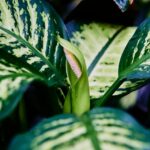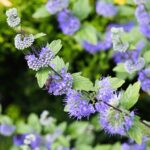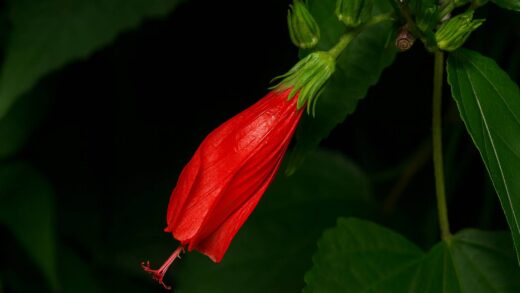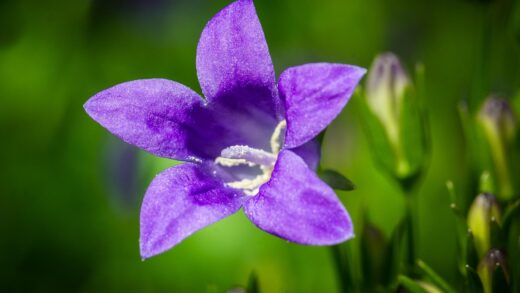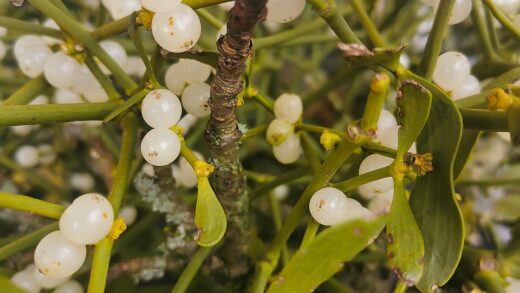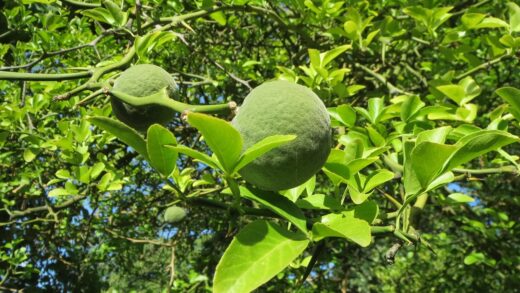While basil is a relatively robust and easy-to-grow herb, it is not immune to a range of diseases and pests that can impact its health and productivity. Proactive management and early detection are the keys to keeping these problems at bay and ensuring a bountiful harvest. Many issues can be prevented or minimized through good cultural practices, such as providing adequate spacing for air circulation, watering at the base of the plant to keep foliage dry, and maintaining healthy, fertile soil. However, even with the best care, problems can arise, and knowing how to identify and respond to the most common afflictions is an essential skill for any basil grower.
Fungal diseases are among the most prevalent threats to basil, particularly in humid conditions or when plants are overcrowded. These diseases are caused by microscopic fungi that thrive in moist environments and can spread quickly through spores carried by wind, water, or on garden tools. The most common fungal issues affecting basil include downy mildew, powdery mildew, and fusarium wilt. Each of these diseases presents with distinct symptoms and requires a specific approach to management and control. Early identification is critical, as once a fungal infection becomes well-established, it can be very difficult to eradicate.
Pests can also pose a significant problem, feeding on the leaves and stems of the basil plant, causing physical damage and potentially transmitting diseases. Common pests that are attracted to basil include aphids, Japanese beetles, slugs, and snails. These pests can weaken the plant, reduce its yield, and mar the appearance of the leaves, making them unsuitable for culinary use. An integrated pest management (IPM) approach, which combines cultural controls, physical removal, and the use of targeted, low-impact treatments, is the most effective and environmentally responsible way to handle these unwanted visitors.
The overall health of the basil plant plays a crucial role in its ability to withstand attacks from both diseases and pests. A plant that is stressed due to improper watering, nutrient deficiencies, or insufficient sunlight will be far more susceptible to problems than a strong, vigorous plant. Therefore, the first line of defense is always to provide optimal growing conditions. By ensuring your basil has the sun, water, and nutrients it needs to thrive, you are fundamentally boosting its natural defenses and making it a less inviting target for a wide range of potential issues.
Fungal diseases
Basil downy mildew is one of the most serious and widespread diseases to affect basil in recent years. It is caused by the fungus-like organism Peronospora belbahrii. The first noticeable symptom is often a pale yellowing of the leaves, which can resemble a nutrient deficiency. However, upon closer inspection of the undersides of the leaves, you will find a characteristic fuzzy, grayish-purple mold. This disease thrives in humid conditions and can spread rapidly, causing widespread leaf drop and eventually killing the plant.
More articles on this topic
Preventing downy mildew is primarily about managing moisture and airflow. Ensure your basil plants are spaced far enough apart to allow for good air circulation, which helps the leaves dry more quickly. Always water at the base of the plant in the morning to keep the foliage as dry as possible. If downy mildew is a persistent problem in your area, the most effective strategy is to plant resistant varieties. Plant breeders have developed several excellent cultivars, such as ‘Prospera’ and ‘Amazel’, that show strong resistance to this disease. If an infection does occur, remove and destroy affected leaves or entire plants immediately to prevent further spread.
Fusarium wilt is another devastating soil-borne fungal disease (Fusarium oxysporum f. sp. basilicum) that can affect basil. The symptoms of this disease are quite dramatic: the plant will suddenly wilt, often on just one side, and the stems may develop dark brown streaks. The leaves will turn yellow, and the plant will eventually die. Because the fungus lives in the soil, it can persist for several years, making future plantings in the same spot risky. The fungus enters the plant through the roots and clogs its vascular tissue, preventing the transport of water.
There is no cure for a plant infected with fusarium wilt, so prevention is the only viable strategy. The most important preventative measure is crop rotation; avoid planting basil or other members of the mint family in the same spot for at least three to four years. This helps to break the life cycle of the soil-borne pathogen. When purchasing seeds or plants, look for varieties that are labeled as “F” or “FW” resistant, as these have been bred to be resistant to the disease. If you discover an infected plant in your garden, you must remove and destroy it immediately, along with the soil immediately surrounding its roots, to reduce the amount of fungal inoculum in your garden.
Common insect pests
Aphids are small, pear-shaped, sap-sucking insects that can often be found clustered on the tender new growth and undersides of basil leaves. They can be green, black, or brown in color. As they feed, they excrete a sticky substance called honeydew, which can attract ants and lead to the growth of sooty mold. A small aphid population is usually not a major concern, but a large infestation can cause the leaves to curl, yellow, and become distorted, and can stunt the plant’s growth.
More articles on this topic
Managing aphids on an edible herb like basil requires a gentle approach. Often, a strong jet of water from a hose is enough to dislodge them from the plant. This should be repeated every few days until the population is under control. For more persistent infestations, an application of insecticidal soap can be very effective. Insecticidal soap works by disrupting the outer cell membrane of soft-bodied insects like aphids and is safe to use on edible plants, provided you follow the label instructions and rinse the leaves thoroughly before consumption. Encouraging natural predators like ladybugs and lacewings into your garden can also provide excellent long-term control.
Japanese beetles can be a particularly destructive pest for basil and many other garden plants. These metallic green and copper-colored beetles are voracious feeders that skeletonize leaves, eating the tissue between the veins and leaving behind a lace-like remnant. They tend to feed in large groups, and a significant infestation can defoliate a basil plant in a very short amount of time. They are most active during the warmest parts of the day in mid-summer.
The most effective and direct method for controlling Japanese beetles in a small garden setting is to hand-pick them from the plants. The best time to do this is in the early morning when the beetles are sluggish. Simply knock them off the leaves into a bucket of soapy water. This method, while labor-intensive, avoids the use of chemical pesticides. Covering your basil plants with a fine-mesh row cover during the peak beetle season can also be an effective physical barrier to prevent them from reaching the plants in the first place. Pheromone traps are available but are often not recommended for home gardens, as they can attract more beetles to your yard than they actually trap.
Slugs and snails
Slugs and snails are mollusks that can cause significant damage to basil, especially to young, tender seedlings. They are nocturnal feeders, so you will often see their damage before you see the culprits themselves. The tell-tale sign of their activity is the presence of large, ragged holes chewed in the leaves. They also leave behind a characteristic slime trail, a silvery, shimmering track that will be visible on the leaves and surrounding soil in the morning.
There are several methods for controlling slugs and snails. One popular and effective technique is to set up beer traps. To do this, simply bury a shallow container, like a tuna can or yogurt cup, in the soil so that its rim is level with the ground. Fill the container with beer. The slugs and snails are attracted to the yeast in the beer, will crawl into the trap, and drown. These traps should be checked and refilled every few days. You can also create physical barriers around your basil plants by sprinkling abrasive materials like crushed eggshells, diatomaceous earth, or coffee grounds on the soil surface, as slugs and snails are reluctant to cross these sharp or drying substances.
Another strategy is to manage the garden environment to make it less hospitable for these pests. Slugs and snails thrive in damp, dark conditions. They often hide during the day under boards, rocks, dense ground covers, or thick layers of mulch. By keeping the area around your basil plants clean and free of debris, you can eliminate their hiding places. Watering your garden in the morning rather than the evening is also helpful, as the soil surface will have a chance to dry out by nighttime, making it more difficult for them to travel.
If you venture out into the garden at night with a flashlight, you can also resort to hand-picking the slugs and snails off your plants. This is a very direct and effective method of reducing their population. Simply collect them and dispose of them as you see fit. Combining several of these control methods, such as trapping, creating barriers, and maintaining a clean garden environment, will provide the most comprehensive and successful defense against slug and snail damage.
Environmental and physiological problems
Sometimes, issues that appear to be caused by a disease or pest are actually the result of environmental stress or physiological disorders. One common example is sunscald, which can occur when a basil plant is exposed to excessively intense, direct sunlight, particularly in hot, dry climates. The affected leaves may develop white or yellow bleached-out patches, and in severe cases, these areas can become thin, papery, and necrotic. While basil loves sun, providing some light afternoon shade during the hottest part of the summer can help to prevent this problem.
Oedema (or edema) is a physiological disorder that can affect basil, especially plants grown indoors or in greenhouses where humidity is high and airflow is poor. It occurs when the roots of the plant absorb water faster than the leaves can transpire it. This excess water pressure causes cells on the undersides of the leaves to burst, forming small, water-soaked blisters. These blisters eventually turn into tan or brown corky spots. Oedema is not a disease and cannot spread from plant to plant. The solution is to reduce humidity, improve air circulation (by using a small fan, for example), and be careful not to overwater.
Legginess is a common problem, particularly when starting basil from seed indoors. It is characterized by long, thin, weak stems with sparse leaves. This is almost always a direct result of insufficient light. The seedlings are stretching in an attempt to reach a stronger light source. To prevent this, you must provide very bright light for your seedlings. A south-facing window may not be enough; placing the seedlings under a grow light, positioned just a few inches above the tops of the plants for 12-16 hours a day, is the best way to ensure they grow into strong, stocky, and healthy plants.
Finally, premature bolting, or flowering, can be considered a physiological problem from a gardener’s perspective. While it is a natural part of the plant’s life cycle, it is undesirable when you are growing basil for its leaves, as flowering causes the flavor to decline. Bolting is often triggered by stress, such as inconsistent watering (too much or too little), extreme heat, or the plant becoming root-bound in its container. To delay bolting, provide consistent care, harvest regularly to encourage vegetative growth, and be vigilant about pinching off any flower buds as soon as they appear.










